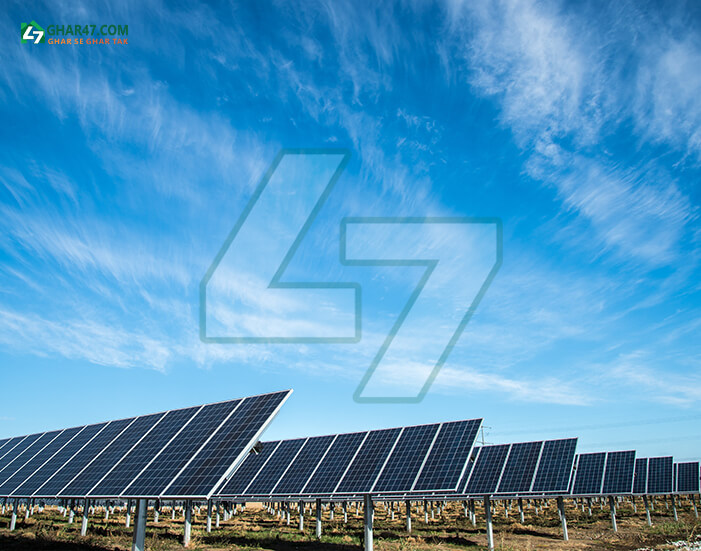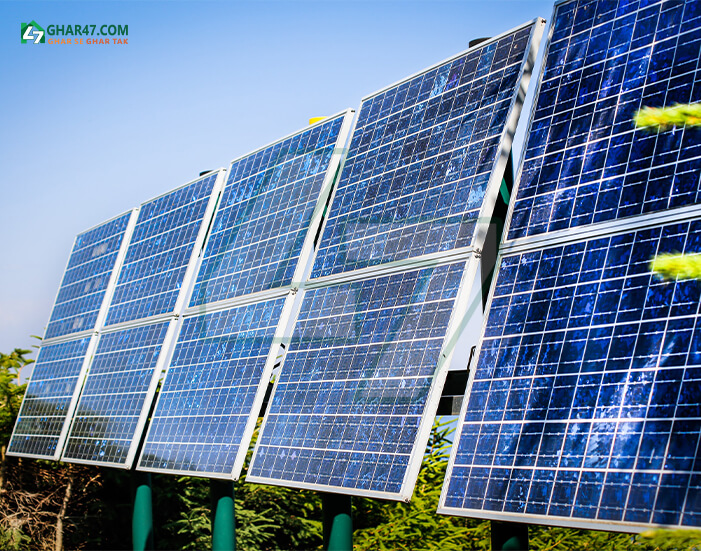
The increase in load shedding in Pakistan has forced residents to turn to other sources of power. People struggle to do their jobs without electricity and worry about their devices becoming ruined. It may occur due to frequent load shedding, which harms the system. Although they require a lot of maintenance, backup power sources like generators or UPS are also suitable options.
Pakistanis are currently using solar panels as a solution to completely solve this issue. When it functions well, the approach is highly effective and doesn’t need much work. So let’s learn about this option, how they work, their benefits, and their types!
What are Solar Panels?
Before getting to know further about it, let us take a look at a detailed explanation of what solar panels are. Solar panels use a natural resource of solar energy to generate direct current power. Photovoltaic arrays use solar energy to power electrical devices.
In addition to producing energy for household and commercial solar electric systems, solar panels may also be used for a broad range of other purposes.
How Do Solar Panels Work?
Solar cells are used to create solar panels. A cell is a tiny disc made of silicon-like semiconductor material. They are wired into the circuit. Light is turned into electricity when it strikes the semiconductor and travels through the circuit. The solar cell ceases producing electricity as soon as the light source is turned off.

The amount of light that reaches a solar panel determines how much electricity is available to it. It generates more electricity the more light it receives. Solar panels are sometimes referred to as photovoltaic panels, or PV panels because the entire procedure is known as the photovoltaic effect.
Benefits of Solar Panels
Solar power is the most popular type of alternative electricity source that is reliable and sustainable. It can also be channelized and then run on any and every device in the home. Installing a solar energy system in your home increases offers and property values. When you switch to solar power, your reliance on centralized private or public grids instantly decreases. Going independent is the most secure and long-lasting option in an environment of rising demand and erratic supply. It is also suitable for the environment to utilize solar rooftop systems. Over the course of their lifetime, solar panel systems require little or no maintenance.
Generating energy from a source like solar panels is pollution free so will help to make a clean and green Pakistan.
Types of Solar Panels

Solar panels come in all sorts of varieties. You must first be informed of their distinctions if you intend to purchase it. This will enable you to get the precise solar panel that best suits your requirements in terms of price or the kind of connected devices. The list of solar panels is as follows:
Monocrystalline Solar Panels
Monocrystalline solar panels are said to be one of the most developed types of solar panels as compared to the others. As its name suggests, the monocrystalline solar panels are made from single-crystal silicon. The drawn approach is used to create enormous cylindrical silicon ingots utilizing a technique known as “Czochralski.” To create silicon wafers, these ingots are then cut along their four edges.
The cut-out ingot edges, even color, and homogeneous appearance of the monocrystalline panels make them simple to differentiate from other types of panels. Typically, the guarantee on these solar panels is for more than 25 years. Due to their small size, they may both be put on the ground or on a roof. They are a bit more expensive. The efficiency of monocrystalline solar panels can exceed 20%.
Polycrystalline Solar Panels
They also go by the name multi-crystalline solar panels, and their technology is more recent. These panels weren’t made using the Czochralski method. When several pieces of unprocessed silicon are heated and then rapidly cooled. It is cut into square wafers after cooling to create the panel. These panels are easily recognized thanks to their unusual color and noticeable graining or speckled appearance.
These panels need more room so it is not preferable for people who do not have more space. With proper maintenance, the 25-year guarantee for polycrystalline solar panels may be extended. They are a bit less expensive. Polycrystalline solar panels have an efficiency range of 13 to 16 percent.
Thin-Film Solar Panels
The most recent solar panel type is this one. It is the most adaptable of the three due to its special flexibility and manufacturing method, which allows these panels to be created from a variety of materials. Solar panels constructed from silicon wafers are around 350 times thicker than thin-film panels. Depending on the material they are built of, thin-film solar panels can be either blue or black. Thin-film efficiency ranges from seven to 18 percent.
It is challenging to single out one type as the finest because it depends on the situation. Therefore, you may use this guide to determine the best solar panel based on your needs if you ever wish to get one.
There you have it: a thorough analysis of the Solar Panels. Hopefully, this information helped you learn more about Solar Panels and their types. If you liked what you read, explore more on our website and share it with your friends!
